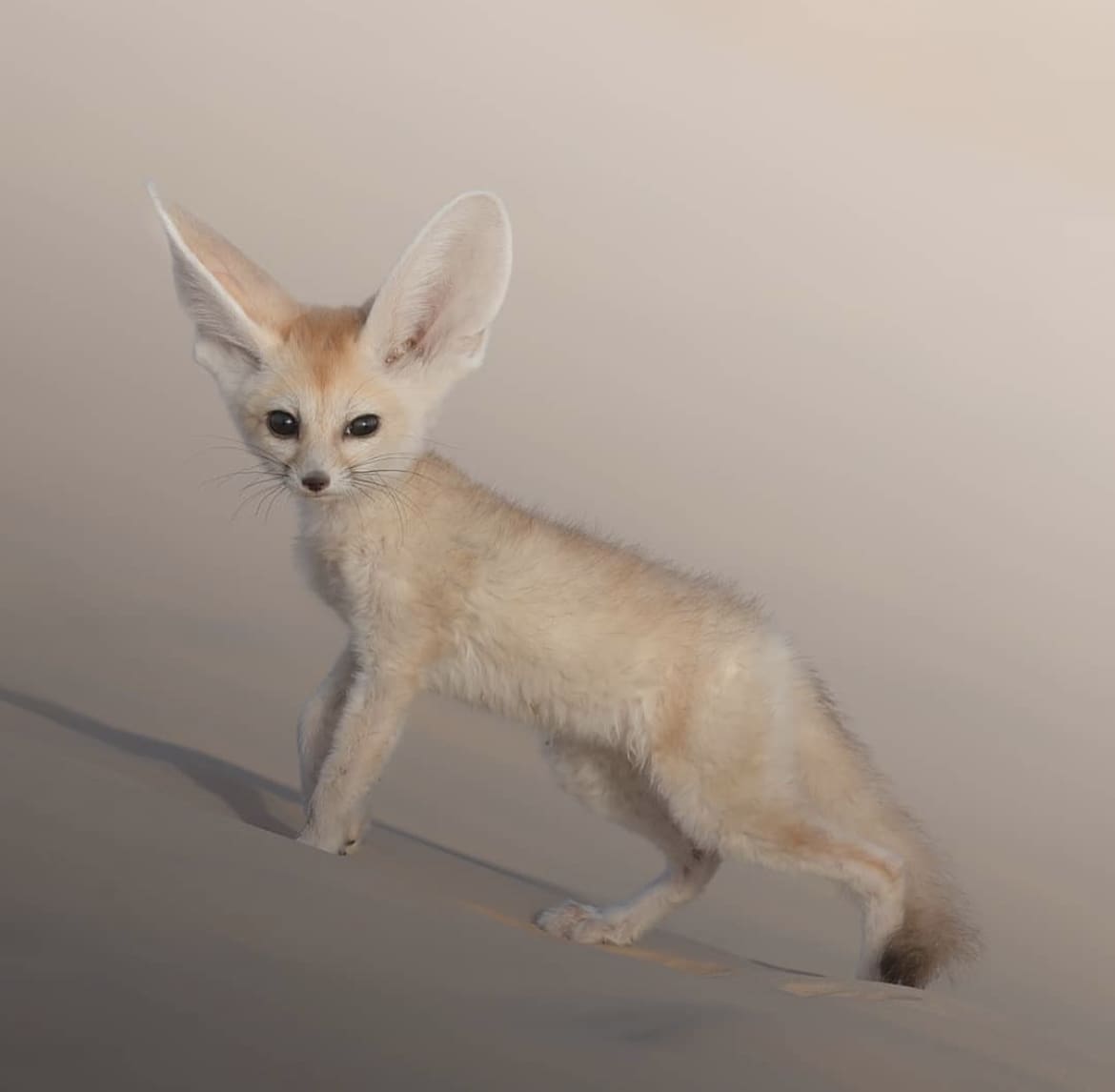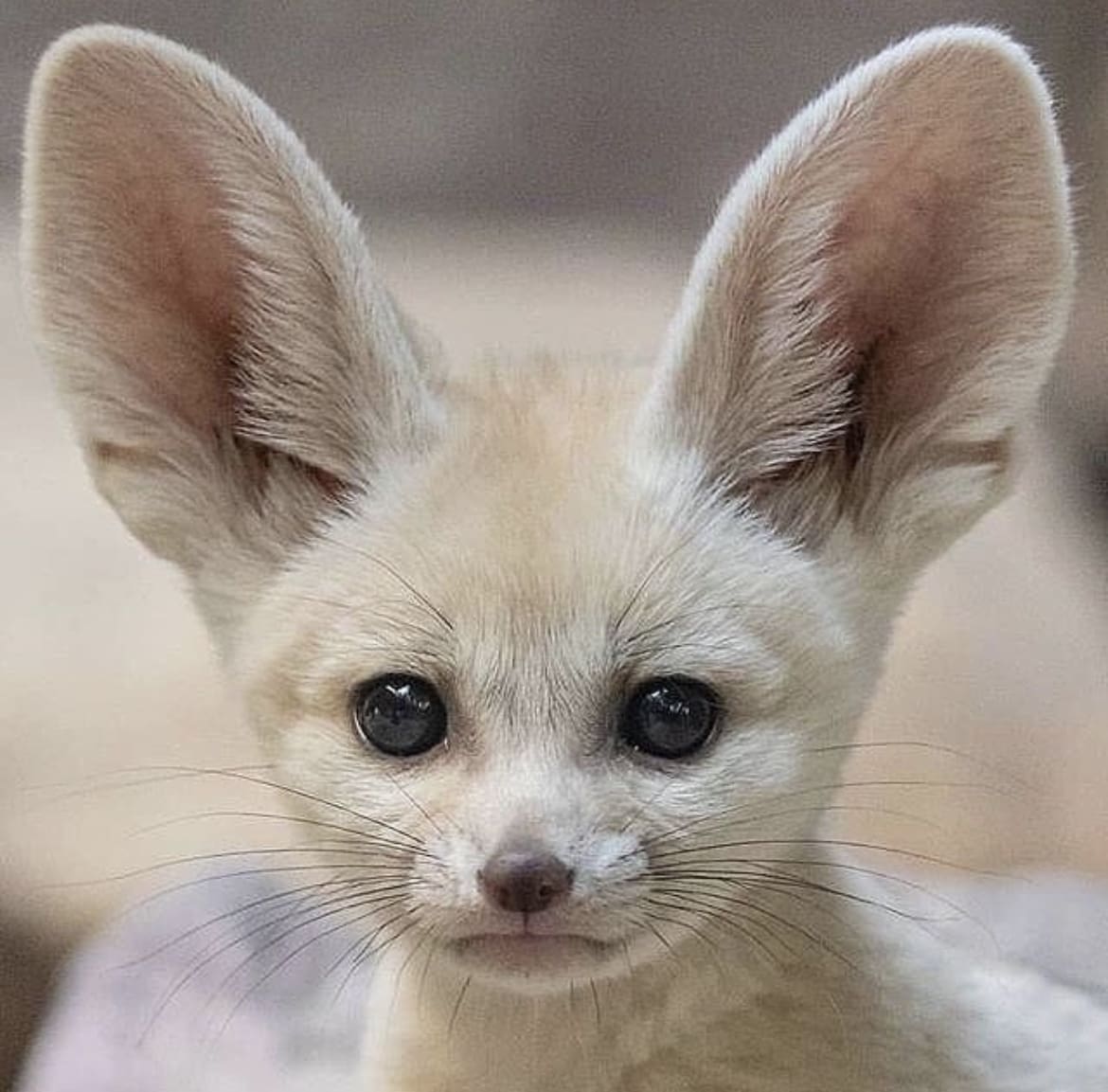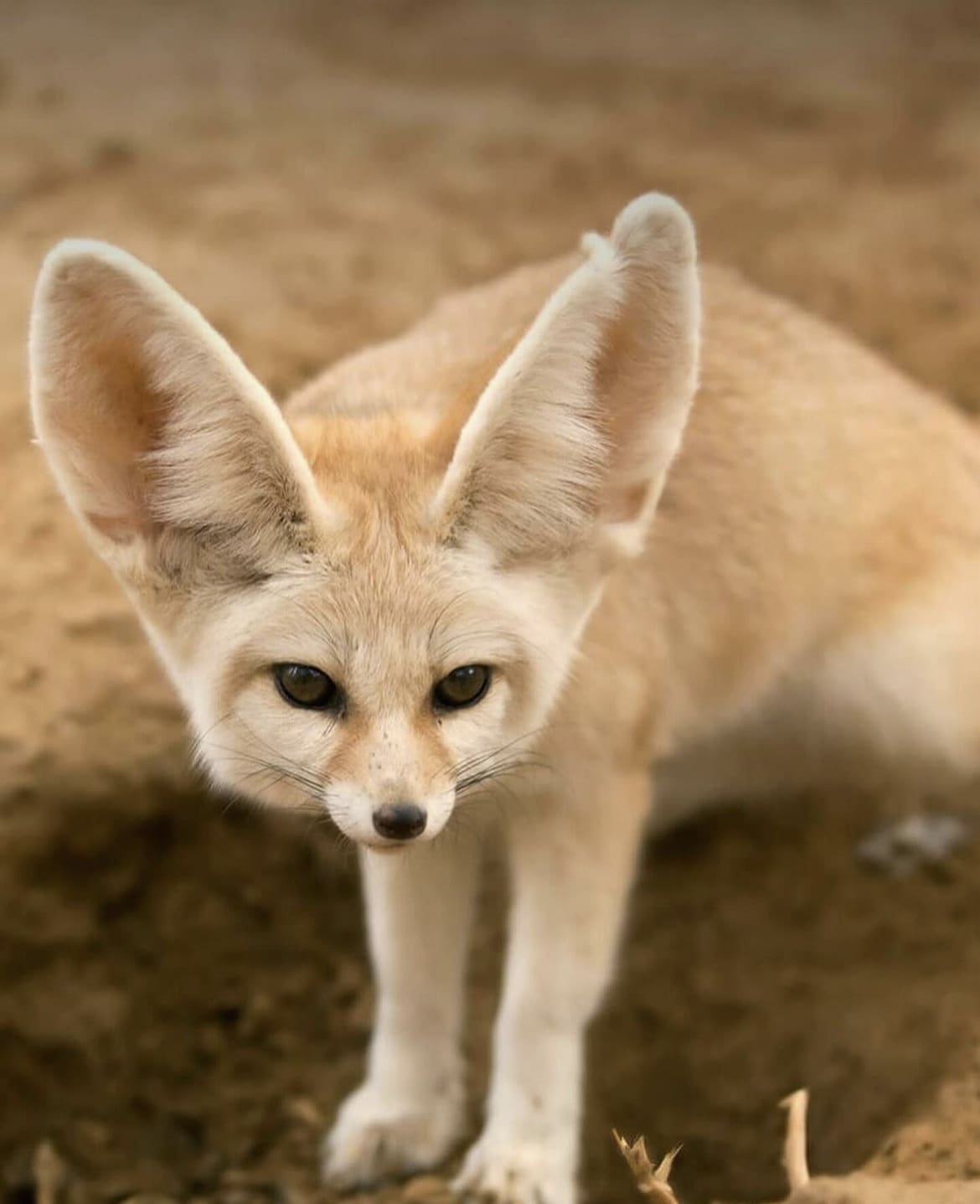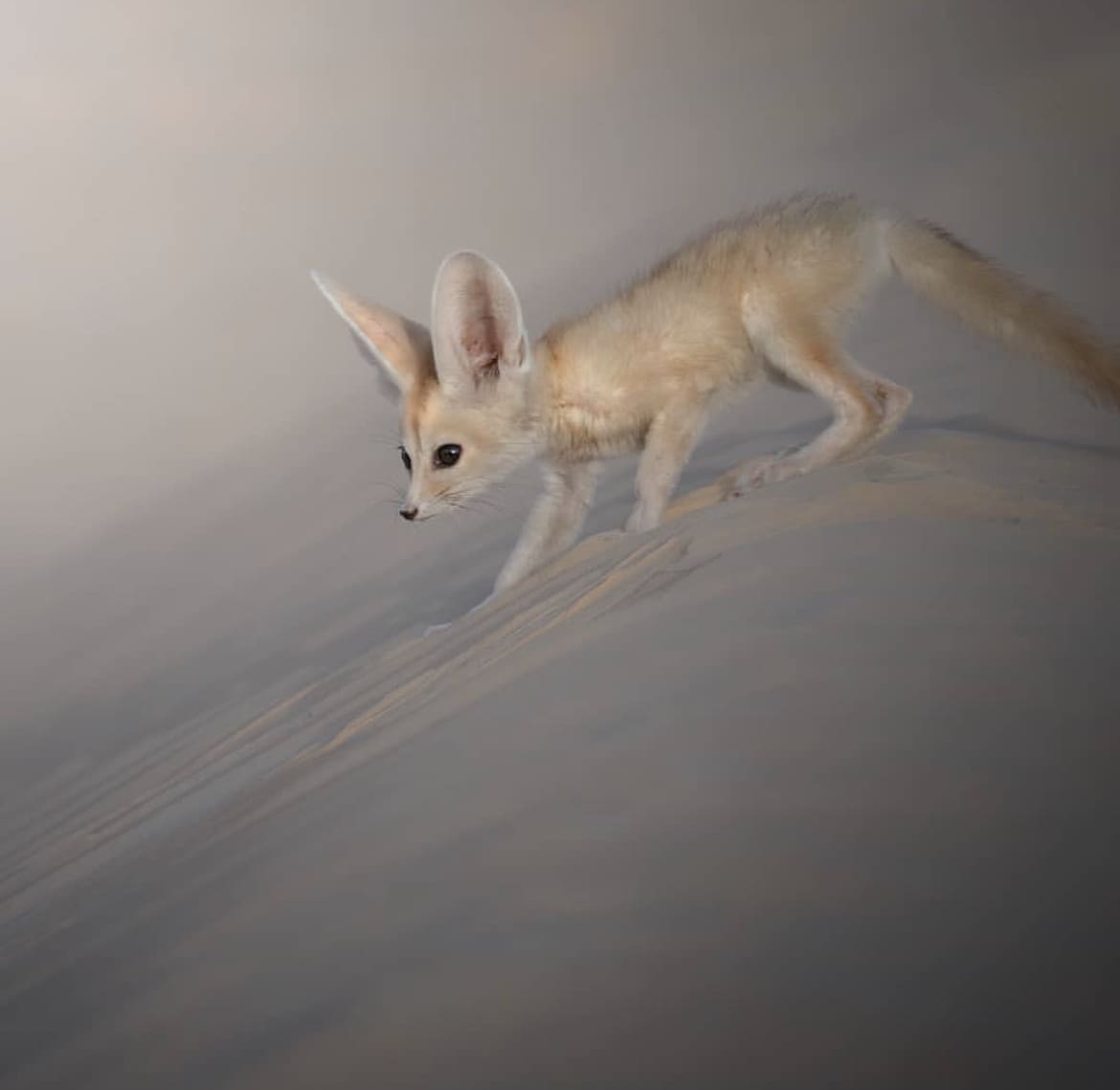Whether you’re a die-hard animal lover or just looking to amp up your trivia game, this journey into the Fennec Fox’s world is guaranteed to spice up your knowledge and maybe even your Instagram feed.
What is the Fennec Fox?
Imagine the desert, vast and unforgiving. Now, picture the most adorable creature with oversized ears popping up from behind a dune. That, my friend, is the Fennec Fox, the fluffiest, most eye-catching character of the Sahara. Officially tagged as Vulpes zerda in the science world, this little fox could win the “Miss Universe” of the animal kingdom based on cuteness alone.
Native to the Sahara Desert and parts of North Africa, these pint-sized predators are built to thrive in some of the harshest conditions on Earth. They’re the smallest members of the canine family, but don’t let their size fool you; these foxes are more than meets the eye.

What do Fennec Foxes look like?
Okay, picture this: a mix between a high-quality plush toy and an anime character. Fennec Foxes sport a cream-colored fur that can range from soft white to light brown, designed to reflect the desert’s scorching sun. But their most striking feature has to be those enormous, bat-like ears. Not just for show, these satellite dishes can be half as long as their body and are perfect for dissipating heat and listening for prey under the sand.
With dark, almond-shaped eyes that sparkle like jewels in their fluffy faces, it’s no wonder these creatures look like they’ve jumped straight out of a magical realm.
How big are Fennec Foxes?
Ever held a chihuahua? Then you’ve got a pretty good idea of how big (or should I say, small) Fennec Foxes are. Weighing in at just 2 to 3.5 pounds (1 to 1.5 kilograms) and measuring about 14 to 16 inches (35 to 40 centimeters) in body length, they’re the tiniest canines around.
But let’s not forget the tail—a bushy, black-tipped marvel that adds another 7 to 12 inches (18 to 30 centimeters) to their length. This tail isn’t just for show; it’s a versatile tool for communication, balance, and even warmth during those chilly desert nights.
Fennec Fox Skin
When it comes to surviving in the desert, every feature counts, and for Fennec Foxes, their skin is a key player. It’s like they’re wearing a built-in, all-weather coat tailored for extreme conditions.
Their skin is thick enough to handle the midday sun yet sensitive enough to lose excess heat when the cool night rolls in. Covered in that soft, fluffy fur, their skin helps regulate their body temperature, ensuring they stay cool under the scorching sun and warm during those brisk desert nights.

Fennec Fox Teeth
Fennec Foxes are omnivores, which means their dental toolkit needs to handle both the crunch of insects and the occasional tenderness of fruits. Their teeth are small but mighty, designed to efficiently crunch down on their varied diet. The sharp canines? Perfect for snagging a quick-moving meal. The molars? Ideal for grinding down plant material.
It’s this adaptability in their diet, mirrored by their versatile teeth, that lets them thrive in an environment where food can be scarce and every calorie counts.
Fennec Fox Ears
Ah, the crowning glory of the Fennec Fox—the ears. If you thought they were just for show, think again. These oversized audio receivers serve multiple survival functions. First, they’re like personal air conditioners, radiating heat away from the body to keep these little guys cool. Then there’s their incredible hearing, allowing Fennec Foxes to detect prey moving underground, even at great distances.
Whether it’s the scuttle of a beetle beneath the sand or the distant patter of a fellow fox’s feet, those ears miss nothing. It’s this combination of thermal regulation and acute hearing that makes their iconic ears more than just a cute accessory.
What do Fennec Foxes eat?
The Fennec Fox’s diet is as diverse as the desert is vast. These omnivorous little adventurers aren’t picky eaters. Their menu includes everything from insects and small rodents to birds, eggs, and even fruits.
This versatility in their diet is a testament to their adaptability, allowing them to thrive in an environment where food sources can be unpredictable. The Fennec Fox’s ability to switch gears based on availability ensures they’re always able to rustle up something to munch on, making them the ultimate desert foragers.
How do Fennec Foxes hunt?
Now, onto the hunt. Fennec Foxes are nocturnal creatures, which means they do most of their hunting under the cover of night. Their large ears aren’t just for show; they play a crucial role in locating prey hidden beneath the sand. Once they’ve homed in on their target, they use their agile, lightweight bodies to dig or pounce with surprising speed.
Their hunting strategy is a blend of patience, precision, and prowess, allowing them to snag meals that other predators might overlook. It’s this combination of keen senses and agility that makes the Fennec Fox a master hunter of the night.
Fennec Fox Social Structure
You might think that in the vast expanse of the desert, Fennec Foxes would lead solitary lives, but you’d be mistaken. These creatures are surprisingly social, forming tight-knit family groups known as “skulks.” Each skulk is a little community unto itself, with pairs or small families sharing dens and cooperating in the care of their young.
This social structure not only provides safety in numbers but also facilitates the sharing of resources and responsibilities. From hunting to den maintenance, Fennec Foxes work together to ensure the well-being of the group, showcasing a level of social cohesion that belies their wild, untamed nature.
How do Fennec Foxes reproduce?
The dance of Fennec Fox reproduction is as intriguing as their desert life. Mating season turns the desert into a stage for courtship displays and pair bonding. These foxes are monogamous, often forming bonds that last a lifetime. After a gestation period of about 50 days, the female gives birth to a litter of 2 to 5 kits.
These underground dens become nurseries, where both parents play active roles in nurturing their offspring. The kits are born blind and helpless, relying entirely on their parents for warmth, protection, and nutrition. By about 10 weeks, they’re weaned, venturing out of the den with a mix of caution and curiosity. This close-knit family structure emphasizes the importance of parental investment in the harsh desert environment, where survival is a communal effort.

How long do Fennec Foxes live?
In the wild, the life of a Fennec Fox is fraught with challenges, from finding food to evading predators. Despite this, they have a surprisingly robust lifespan, typically living up to 10 years in the wild.
In captivity, where threats are minimized, and healthcare is provided, they can live up to 14 years. This longevity is remarkable for such small creatures, attesting to their resilience and the effectiveness of their adaptations to the desert life. It’s a testament to the saying, “tough things come in small packages,” showcasing that size isn’t always indicative of strength or the ability to endure.
Are Fennec Foxes aggressive?
Despite their wild nature, Fennec Foxes are not inherently aggressive towards humans. They are, however, wild animals, and their behavior can be unpredictable. In their natural habitat, they’re more likely to flee from danger than confront it. This cautious demeanor is a survival strategy, prioritizing escape over aggression.
However, like any animal, they can display defensive behavior if they feel threatened or cornered. In captivity, where they can become accustomed to human interaction, they generally show a docile and curious nature. But it’s essential to remember, no matter how cute and cuddly they might seem, they’re not domesticated pets and should be respected as the wild animals they are.
Are Fennec Foxes territorial?
Absolutely, Fennec Foxes take their personal space quite seriously. Despite their cute appearance, they’re not the type to share their sandbox willingly. Each pair or family group claims a territory, which they mark and defend passionately against intruders. These territories can be quite expansive, considering the need to roam for food.
However, they’re not about pointless showdowns; their primary goal is to avoid conflict by clearly marking their domain with urine and feces, a kind of “keep out” sign that’s hard to miss. This territorial behavior ensures they have enough resources to survive in their challenging environment, minimizing conflict and promoting harmony within their own group.

Are Fennec Foxes fast?
When it comes to speed, Fennec Foxes might not break any records, but they’re certainly no slouches. Their compact bodies are built for agility and quick bursts of speed, crucial for both catching prey and evading predators. They can dart across the sand with surprising quickness, a skill that’s especially handy when they need to make a swift retreat into the safety of their burrows.
While they might not outrun every threat, their speed and agility are perfectly suited to the twist-turns and sharp maneuvers needed in the tight spaces of their desert home.
Where do Fennec Foxes live?
Fennec Foxes are the epitome of desert dwellers. Their primary stomping grounds are the sandy Sahara and other parts of North Africa, where they’ve adapted beautifully to life in one of the harshest climates on Earth. Their homes are not the simple burrows you might imagine but intricate networks of tunnels and chambers, providing protection from predators and the extreme weather.
These dens can be quite elaborate, reflecting the social and territorial nature of these foxes. It’s here, in the vast, open desert, under the cover of night, that the Fennec Fox truly thrives, perfectly attuned to its environment with every sense sharpened for survival.
How many Fennec Foxes are there in the wild?
Quantifying the exact number of Fennec Foxes in the wild is a bit like trying to count grains of sand in the desert—it’s tricky. Their elusive nature, nocturnal habits, and vast, inhospitable habitats make accurate population assessments challenging.
However, they are currently not considered endangered, suggesting that their population, while not precisely known, is stable enough to withstand their natural environment and the threats they face. Ongoing research and conservation efforts aim to better understand their numbers and ensure their survival amidst changing desert landscapes and human encroachment.

Fennec Foxes as pets
The charm of the Fennec Fox is undeniable, and it’s no surprise that some people dream of keeping them as pets. However, the reality of having a wild animal at home is far from the idyllic companionship some might imagine. Yes, they’re adorable, and yes, they can form bonds with humans, but they require specific care, diets, and environments that mimic their natural habitat.
Additionally, their nocturnal lifestyle and natural behaviors can pose challenges in a typical household setting. While legal in some places, the ethics of keeping Fennec Foxes as pets are complex, touching on issues of conservation, welfare, and the intrinsic value of wildness. It’s a debate that prompts us to reconsider our relationship with nature and the creatures we share it with.
Are Fennec Foxes endangered?
Currently, Fennec Foxes are not classified as endangered. They’re listed as “Least Concern” by the International Union for Conservation of Nature (IUCN), indicating a relatively stable population. However, this status should not lead to complacency. Habitat loss, illegal pet trade, and climate change pose ongoing threats to their survival.
Their resilience in the face of adversity is admirable, but it’s a fragile balance, dependent on both their adaptability and our willingness to mitigate the impacts of human activity on their natural environments.
Threats to Fennec Foxes in the wild
Despite their adaptability, Fennec Foxes face significant threats from both natural and human-induced changes. Habitat destruction, due to expanding agriculture and settlements, reduces their living space and food sources. The illegal wildlife trade, driven by demand for exotic pets, poses a serious risk, often resulting in poorly treated animals and disruption of natural populations.
Climate change, altering precipitation patterns and desert ecosystems, further complicates their survival. These challenges underscore the importance of conservation efforts to protect Fennec Fox habitats and regulate the pet trade.

Where to see Fennec Foxes
For those yearning to witness the magic of Fennec Foxes firsthand, several locations offer a glimpse into their world. National parks and reserves in North Africa, such as the Sahara Desert, provide opportunities to observe these animals in their natural environment.
Zoos and wildlife sanctuaries around the world, committed to conservation and education, also offer a chance to see Fennec Foxes up close.
Responsible tourism and support for conservation-focused organizations can contribute to the protection of these enchanting creatures and their habitats.
Tips for spotting Fennec Foxes
Spotting a Fennec Fox in the wild requires patience, respect for nature, and a bit of luck. These nocturnal animals are best seen during the early morning or late evening. Quietly exploring areas near their dens, with minimal disturbance, increases your chances of an encounter.
Guided tours by knowledgeable locals can provide insights into their habits and preferred locations. Always maintain a respectful distance, ensuring your presence does not stress or threaten these delicate animals.
Facts about The Fennec Fox
- The Fennec Fox’s ears can be up to 6 inches long, serving both for heat dissipation and exceptional hearing.
- They have fur on the soles of their feet to protect them from the hot sand.
- Fennec Foxes can go without water for extended periods, getting most of their moisture from food.
- Their night vision is enhanced by a reflective layer behind their eyes, aiding their nocturnal lifestyle.
Myths about The Fennec Fox
- Myth: Fennec Foxes make perfect pets. Fact: They are wild animals with specific needs that can be difficult to meet in a domestic setting.
- Myth: They are silent creatures. Fact: Fennec Foxes are quite vocal, using a variety of sounds to communicate with each other.
- Myth: They can be found in deserts worldwide. Fact: Fennec Foxes are native only to the Sahara Desert and parts of North Africa.
As we conclude our journey through the life and lore of the Fennec Fox, it’s clear these creatures are as complex as they are captivating. They are not just survivors of the desert but symbols of resilience and beauty in the face of adversity.
By understanding and appreciating these remarkable animals, we can play a role in ensuring they continue to thrive in their sandy realms. The Fennec Fox, with its ethereal charm and spirited determination, invites us to marvel at the wonders of the natural world and reminds us of our responsibility to protect it.
